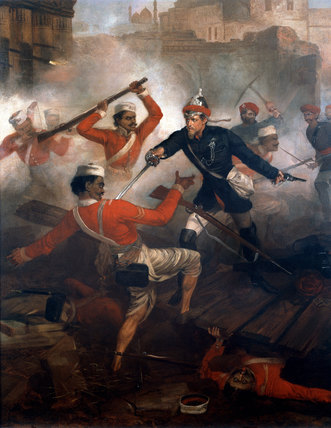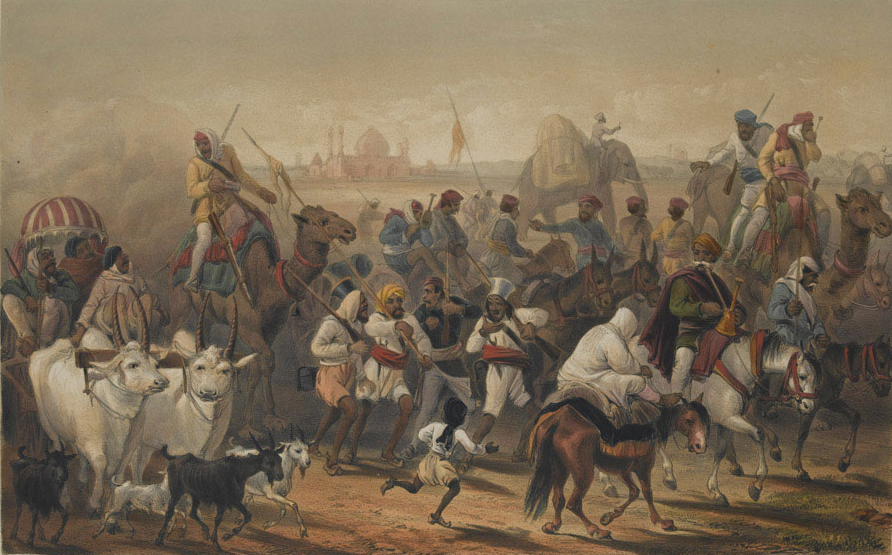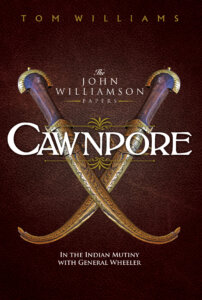Indian Mutiny or War of Independence?
In an age when any conversations about empire and colonialism can be triggering, I’ve always been quite surprised that the John Williamson Papers don’t seem to have attracted a lot of political attacks. I’m surprised rather than pleased, because there is no doubt that controversy sells books and also I suspect that there would be more controversy about the John Williamson series if more people had actually read it.
In Cawnpore, I refer to the events of 1857 as the Indian Mutiny. The book is written from the point of view of a Victorian Englishman and “Indian Mutiny” is what Victorian Englishmen called it. Nowadays, though, what to call that uprising is an intensely political decision. To many Indians and Pakistanis the war was the First War of Indian Independence or the Freedom Struggle of 1857. (Wikipedia hedges its bets with ‘Indian Rebellion’.)

Leaving aside political considerations, part of the confusion as to what to call it is down to the fact that several conflicts coalesced into a single rebellion. There seems little doubt that the actual fighting started with a mutiny. That is, soldiers disobeyed a direct order and, when some were imprisoned, their comrades rose up to release them, murdered some of their officers and broke camp. Whether the soldiers were encouraged to mutiny by political activists seeking independence from the British is uncertain. Some Europeans were convinced that the whole thing was a calculated plot, but it is the nature of the political class always to claim that acts of rebellion were incited by “outside agitators” and there is no clear evidence on this either way. What is certain is that the first troops to mutiny decided to march to Delhi and put themselves at the service of the Mogul emperor.
With mutineers claiming to be acting in the cause of the deposed rulers, the conflict quickly began to take on a wider political complexion. Other rulers, like Nana Sahib, saw the opportunity to re-establish their power while the British, deprived of the support of their native troops, were weakened. The situation was further confused because these rulers did not all act in concert. For example, as mentioned in my novel, the troops who mutinied at Cawnpore first marched towards Delhi to put themselves at the service of the Mogul emperor, before being persuaded to return to Cawnpore to serve the Peshwa, Nana Sahib. Although the various leaders of the Indian forces made common cause against the British, their failure to act effectively as a single political or military force counted against them.
One of the first acts of the rebels in many places (including Cawnpore) was to open the jails. So beside the mutinying troops and the various forces of the native rulers, many of those who joined in the fighting were local convicts who simply saw an opportunity to profit from the general unrest. Thus natives who were associated with the British (such as Christians or other Eurasians) were often attacked and murdered, less to achieve a military or political goal than because their attackers could then loot their property. With an almost complete breakdown of law and order and mass conflict spreading across huge areas of the country, there was an opportunity for many old scores to be settled.
Many Indian troops attached to the British forces and many local rulers supported the British, giving some of the conflict the character of a civil war. This picture (by George Francklin Atkinson in 1859) claims to show Troops of the Native Allies.

There are clear modern parallels. In Iraq the fighting following the American-led occupation was blamed on elements of the Army (essentially mutineers), forces loyal to the old regime, criminal elements and those settling scores between different religious groups. In Britain, at least, commentators struggled for ages to find a term which encompassed all these different elements before they settled on “insurgency”. Perhaps that is how we should refer to the events of 1857. But, whatever the best term should be, for the British involved, and for most British historians, even today, the bloodshed and horror of that year are simply summed up as the Indian Mutiny.

Cawnpore
Cawnpore is now available on Kindle and in paperback.
The events at Cawnpore (now Kanpur) are seen through the eyes of an Englishman who, disillusioned with many aspects of British rule, finds his loyalties torn between the Europeans he despises and the Indians he loves. How can he be true to himself and still survive the massacre that will follow the fall of Cawnpore?
Williamson’s story takes us to the heart of the Indian Mutiny, a crucial point in British history. The massacre at Cawnpore shocked the world and its repercussions shaped the future of India.
It’s real history, but not the way you learned it at school.
(This is an edited version of a piece last posted in 2021)
